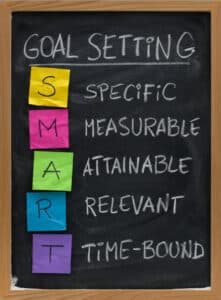Crafting Successful Email and Social Media Campaigns: A Comprehensive Guide
Define Your Campaign Goals
 Setting clear, SMART (Specific, Measurable, Attainable, Relevant, Time-Bound) goals is the cornerstone of any successful campaign. Whether it’s increasing email open rates, enhancing social media engagement, or driving website traffic, your goals should be quantifiable and aligned with your overall marketing strategies. For instance:
Setting clear, SMART (Specific, Measurable, Attainable, Relevant, Time-Bound) goals is the cornerstone of any successful campaign. Whether it’s increasing email open rates, enhancing social media engagement, or driving website traffic, your goals should be quantifiable and aligned with your overall marketing strategies. For instance:
- Increase email subscription rates by 20% within the next six months.
- Boost social media engagement (likes, comments, shares) by 30% by the end of the quarter.
- Enhance brand awareness through targeted social media ads, aiming for a 15% increase in follower count on platforms like Instagram and LinkedIn.
Understand Your Audience
Knowing your audience is the key to crafting messages that resonate. Creating detailed buyer personas and understanding the type of content they prefer is crucial. Consider:
- Demographics: Age, location, job title.
- Psychographics: Interests, challenges, motivations.
- Online behavior: Preferred social platforms, content engagement patterns.
Use surveys, customer feedback, and social media analytics to gather these insights.
Choose the Right Channels
Select channels that best suit your target audience and content type. Each platform has its strengths:
- Facebook: Great for community building and brand storytelling.
- Instagram: Ideal for visual content and younger demographics.
- LinkedIn: Best for B2B marketing and professional content.
- Email: Perfect for personalized, direct communication.
Craft Engaging Email Subject Lines
Your subject line is a critical factor in email open rates. It should intrigue and prompt the reader to open the email. Consider:
- Personalization: Use the recipient’s name or location.
- Urgency: Create a sense of urgency or FOMO (Fear of Missing Out).
- Clarity: Be clear about the email’s value.
Create Compelling Content
 When it comes to creating content, it’s important to make it engaging, informative, and valuable for your audience. For your email campaigns and social media posts, consider incorporating the following strategies:
When it comes to creating content, it’s important to make it engaging, informative, and valuable for your audience. For your email campaigns and social media posts, consider incorporating the following strategies:
- Storytelling: Capture your audience’s attention by sharing captivating customer success stories or providing behind-the-scenes glimpses into your brand’s journey. This humanizes your content and creates a connection with your readers or followers.
- Educational content: Provide your audience with valuable information by creating how-to guides, sharing insightful tips, or offering industry insights. This positions you as an expert in your field and helps build trust with your audience.
- Interactive content: Get your audience involved and encourage participation by including polls, quizzes, or hosting Q&A sessions. This not only increases engagement but also allows you to gather valuable feedback and insights from your audience.
To ensure consistency and stay organized, consider using a content calendar to plan and schedule your content in advance. This helps you maintain a consistent posting schedule and ensures that you’re consistently delivering high-quality content to your audience.
Use Effective Calls to Action
CTAs guide your audience on what action to take next. They should be:
- Clear and concise: No ambiguity about what you want the reader to do.
- Visually striking: Use buttons or contrasting colors to make them stand out.
- Relevant: Tailored to the specific content and audience.
Write Powerful Email Copy
When crafting effective email copy, it’s important to make it engaging, personal, and relevant to the recipient. Here are some key elements to include:
- A personal touch: Begin by addressing the recipient by their name. This simple gesture creates a sense of connection and makes the email feel more personalized.
- Concise and clear messaging: In today’s fast-paced world, people appreciate brevity. Get straight to the point and avoid unnecessary fluff. By keeping your message clear and concise, you ensure that your recipient understands your main purpose or request right from the start.
- Benefits: Highlight the value or benefit of what you’re offering. Whether it’s a product, service, or opportunity, make it clear why it matters to the recipient. By showcasing the benefits, you capture their attention and demonstrate how it can make a positive impact on their life or business.
Design for Engagement
To create engaging content, it is crucial to incorporate various visual elements. Here are a few examples:
- High-quality images and videos that captivate the audience’s attention and convey your message effectively.
- Infographics and charts that present complex information in a visually appealing and easy-to-understand format, making it more engaging for your audience.
- Consistent use of brand colors and fonts to maintain a cohesive visual identity across different platforms and materials.
Create Compelling Social Media Posts
When it comes to crafting effective social media posts, it’s crucial to make them attention-grabbing and value-driven. Here are a few key elements to consider:
- Engaging Visuals: Incorporate eye-catching photos, videos, and graphics that captivate your audience and make your content visually appealing.
- Storytelling: Share compelling stories that resonate with your audience on an emotional level. Connect with them by creating narratives that evoke their emotions and leave a lasting impression.
- Hashtags: Boost visibility and discoverability of your posts by using relevant hashtags. By including popular and industry-specific hashtags, you can increase the reach of your content and attract a wider audience.
Run Targeted Social Media Ads
Use targeted ads to reach your desired audience. Focus on:
- Precise targeting: Use demographic, interest, and behavior data.
- A/B testing: Test different ad formats and content.
- Clear objectives: Align your ads with your campaign goals.
Use the Right Tools
Leverage tools for efficient management and analytics:
- Scheduling tools like Buffer or Hootsuite.
- Analytics tools for performance tracking.
- Email marketing platforms like Mailchimp or HubSpot.
Track and Analyze Your Results
To effectively measure the success of your marketing efforts, it is crucial to regularly monitor and analyze key metrics. Here are some important aspects to consider:
- Engagement Rates: Keep an eye on the number of likes, shares, and comments your content receives. This will help you gauge the level of interest and interaction from your audience.
- Conversion Rates: Track the click-throughs and sign-ups generated by your campaigns. By monitoring these metrics, you can assess the effectiveness of your marketing strategies in converting leads into customers.
- ROI (Return on Investment): Evaluate the return on investment for your paid campaigns. This metric allows you to determine the profitability and efficiency of your marketing initiatives.
Measure Your Campaign Success
Evaluate the effectiveness of your campaigns by:
- Comparing results against your initial goals.
- Gathering feedback through surveys or direct customer engagement.
- Looking at long-term trends in audience growth and engagement.
Optimizing Your Campaign for Success
 Achieving success in your campaign requires a continuous process of refining and fine-tuning your strategies. Here are some key steps to help you optimize your campaign and maximize your chances of success:
Achieving success in your campaign requires a continuous process of refining and fine-tuning your strategies. Here are some key steps to help you optimize your campaign and maximize your chances of success:
- Iterate based on feedback and data analysis: Regularly review the performance of your campaign and make iterative improvements based on the insights gained from feedback and data analysis. This will allow you to adjust your strategies and tactics to better align with your goals and target audience.
- Stay updated with the latest trends and best practices: The digital landscape is constantly evolving, and it’s essential to stay up-to-date with the latest trends and best practices in campaign optimization. By keeping yourself informed, you can leverage new tools, techniques, and strategies that can enhance the effectiveness of your campaign.
- Conduct competitive analysis to understand market standards: Analyzing your competitors’ campaigns can provide valuable insights into market standards and help you identify areas where you can differentiate yourself. By understanding what works well in your industry, you can adapt and refine your own campaign to stand out and attract your target audience.
Elevate Your Digital Marketing with YEWS
In conclusion, crafting successful email and social media campaigns requires a strategic approach, deep understanding of your audience, and continuous optimization. By following these guidelines, businesses can effectively engage their audience, achieve their marketing objectives, and stand out in the competitive digital landscape. Share your thoughts, experiences, or engage with us at YEWS for tailored digital marketing solutions that drive real results.









Leave a Reply